Alphabet Recognition Cursive Alphabet Worksheets for Ages 3-9
7 filtered results
-
From - To
Discover "Alphabet Recognition Cursive Alphabet Worksheets" – a perfect resource for young learners aged 3-9! These engaging and fun worksheets are designed to help children recognize and write cursive letters effortlessly. Our activities combine colorful design with effective exercises, ensuring students enjoy learning their ABCs. These worksheets focus on enhancing your child's handwriting skills, fostering fine motor development, and boosting their confidence in recognizing and forming cursive letters. Ideal for both classroom and home use, they offer a structured approach to mastering cursive writing while making learning an enjoyable experience for your little ones! Explore now to ignite a love for cursive writing!
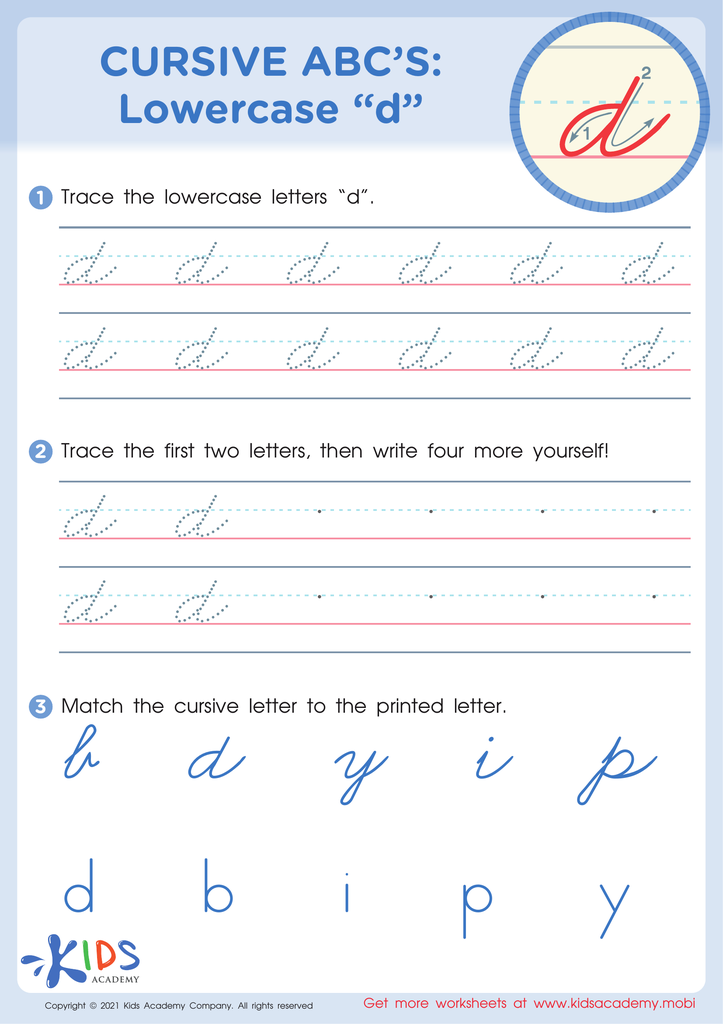

Cursive ABCs: Lowercase d
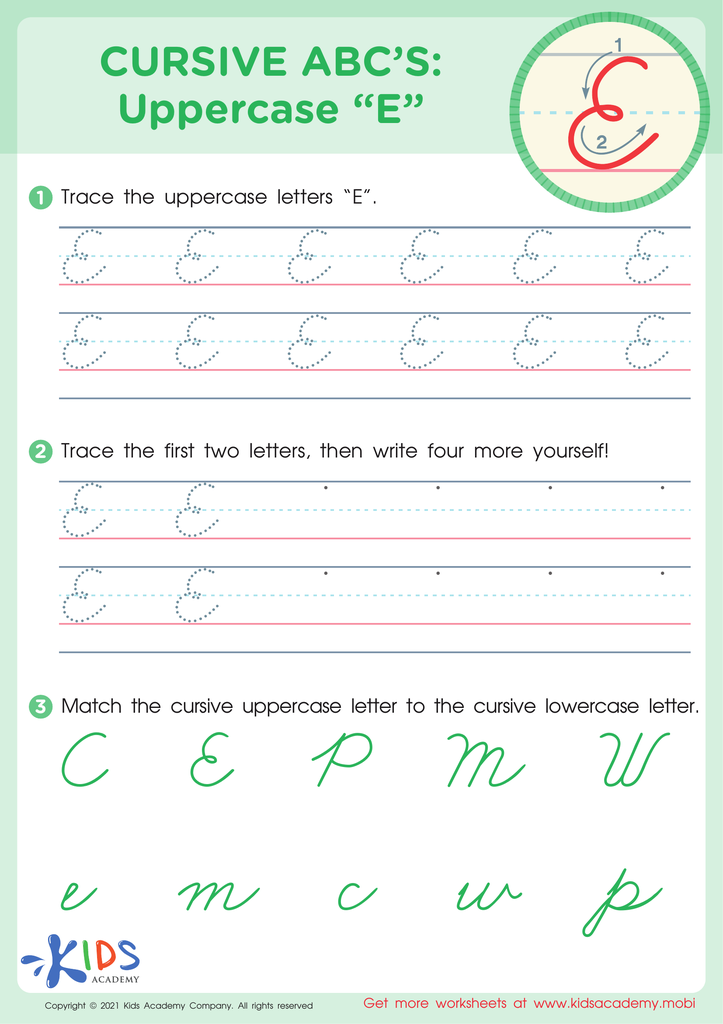

Cursive ABCs: Uppercase E
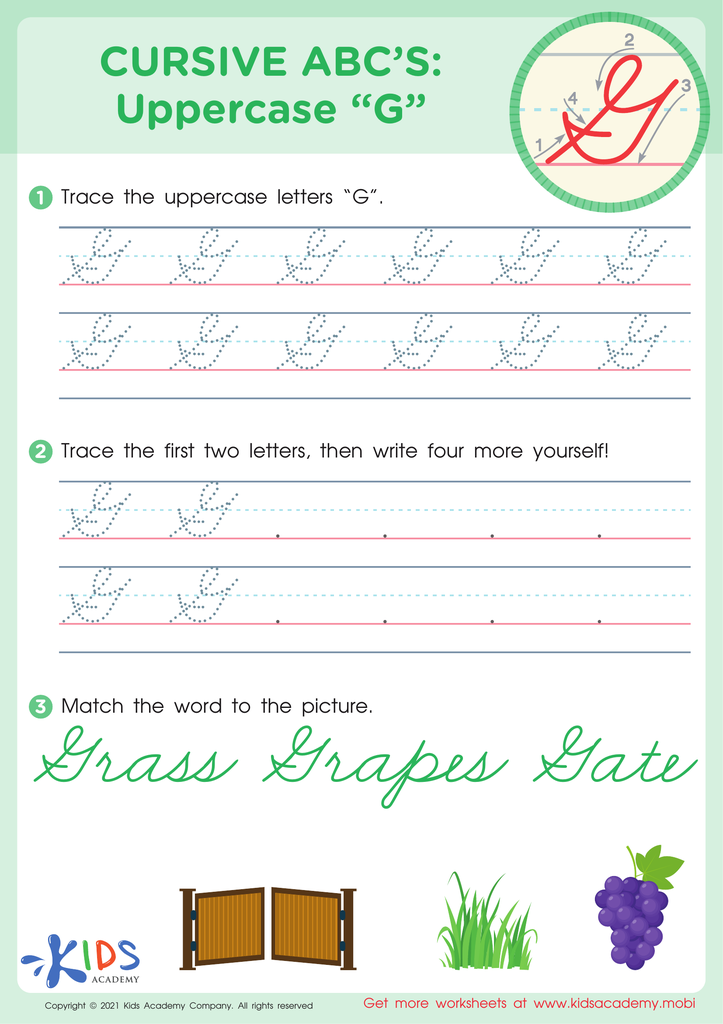

Cursive ABCs: Uppercase G
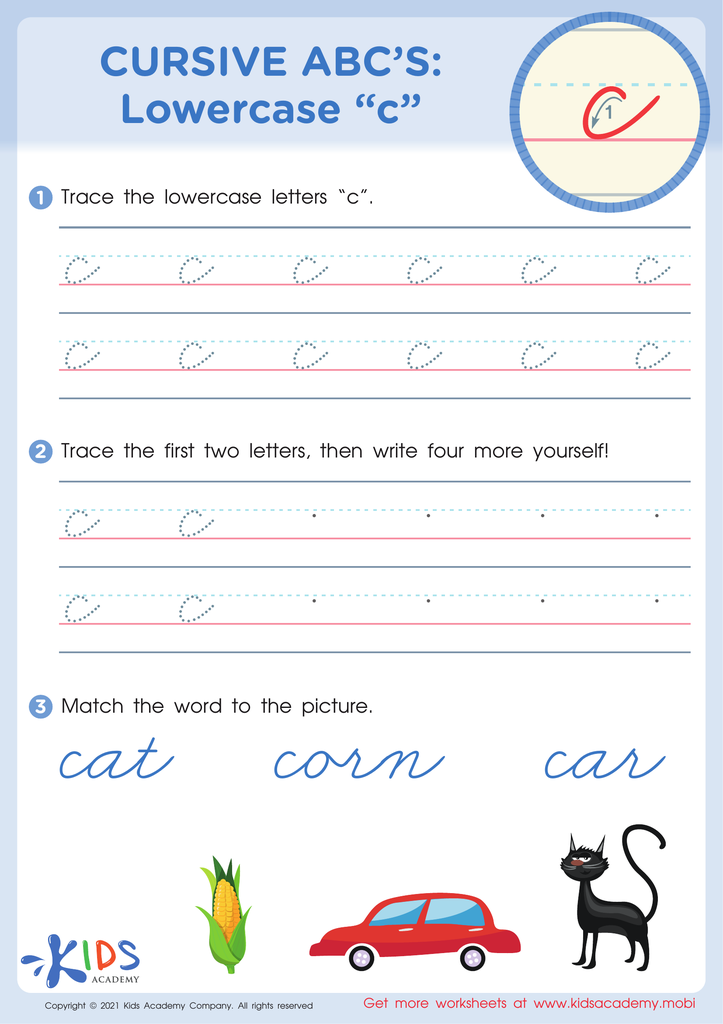

Cursive ABCs: Lowercase c
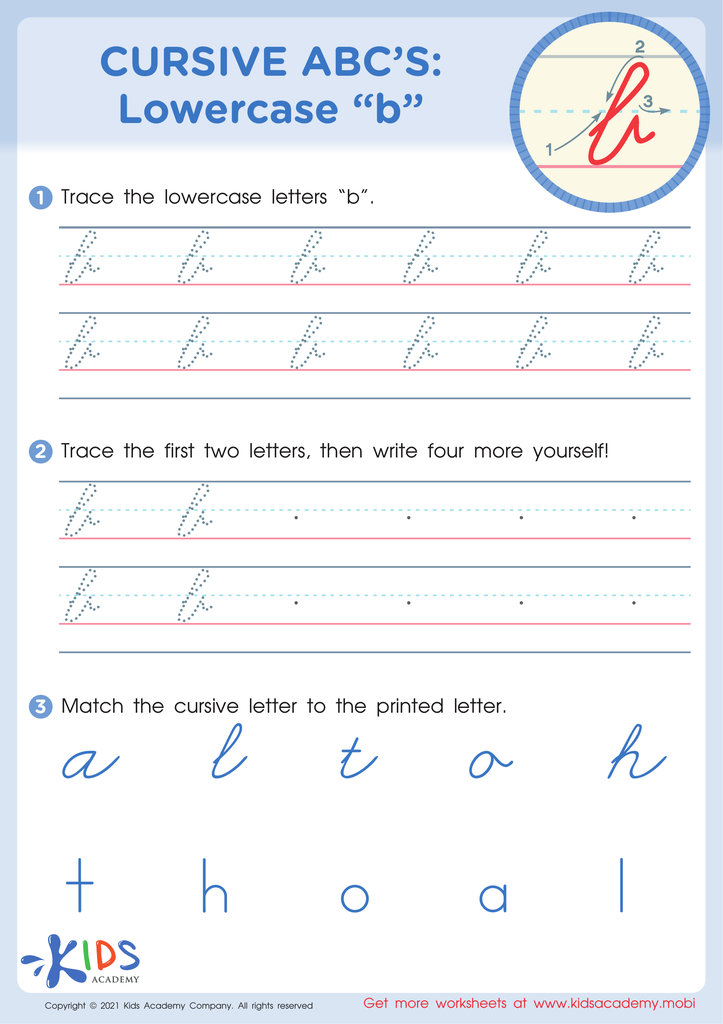

Cursive ABCs: Lowercase b


Cursive ABCs: Uppercase A
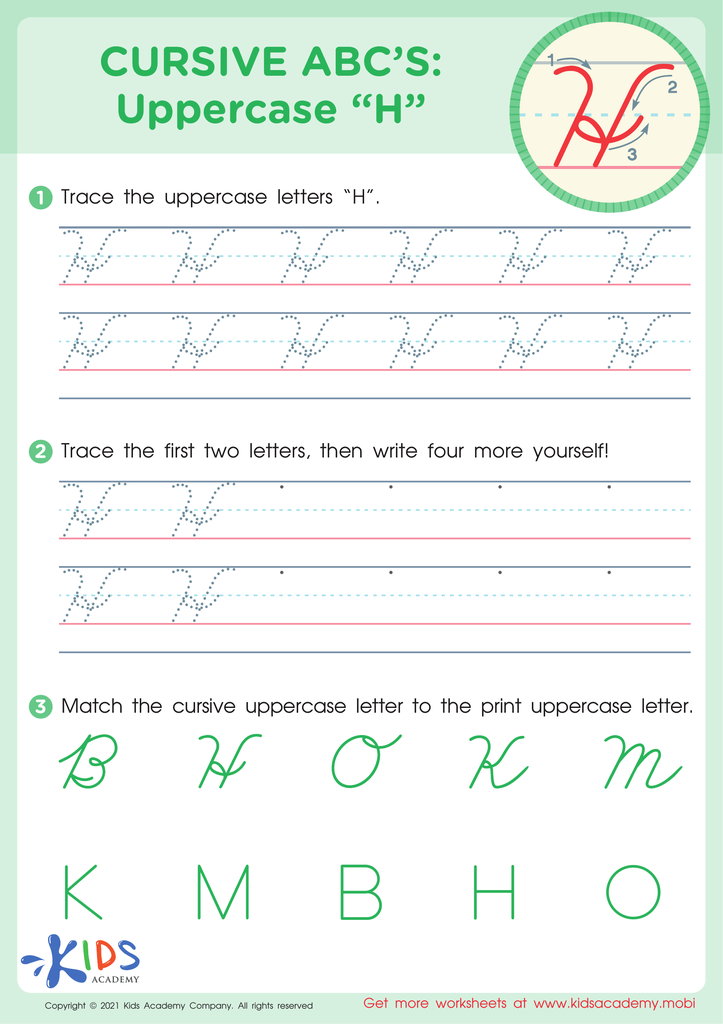

Cursive ABCs: Uppercase H
Alphabet recognition, including cursive alphabet recognition, is foundational for children ages 3-9 because it directly supports their literacy development. During these early years, children are in a critical period for language acquisition. Recognizing both print and cursive alphabets helps solidify their understanding of letters, sounds, and word formation, laying the groundwork for effective reading and writing skills.
Cursive writing, often introduced around the age of 7-9, enhances fine motor skills and hand-eye coordination. Learning cursive can also improve cognitive development as the connected, flowing movements required to write cursive letters activate brain areas involved in thought, language, and working memory.
Educators and parents who prioritize alphabet recognition and cursive instruction give children valuable tools for their academic journey. These skills extend beyond literacy, fostering improved concentration and attention to detail. Cursive writing, in particular, has been linked to improved spelling, as the connected letters encourage children to think about words as whole units, facilitating better retention.
Incorporating both print and cursive alphabets early can also support cultural literacy, as historical documents, signatures, and some educational materials are in cursive. A strong foundation in alphabets ensures children are prepared, confident, and competent as they advance through their education and daily life.













